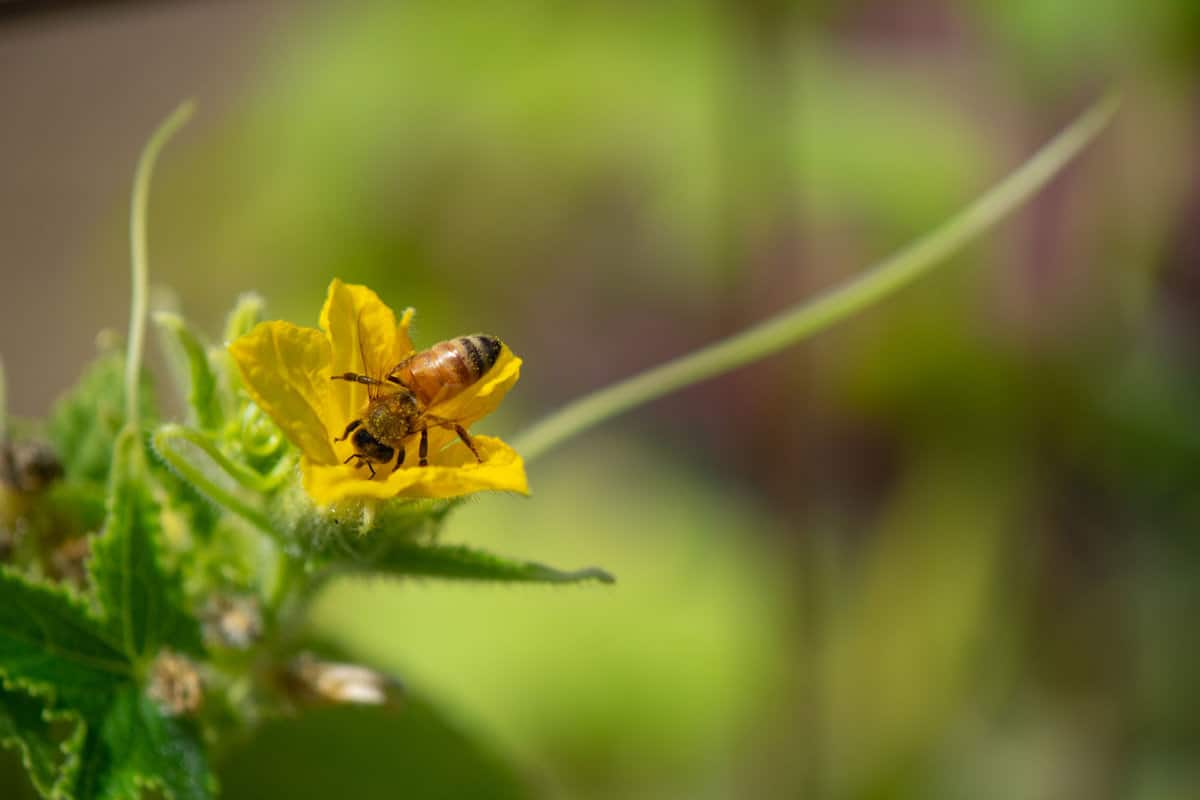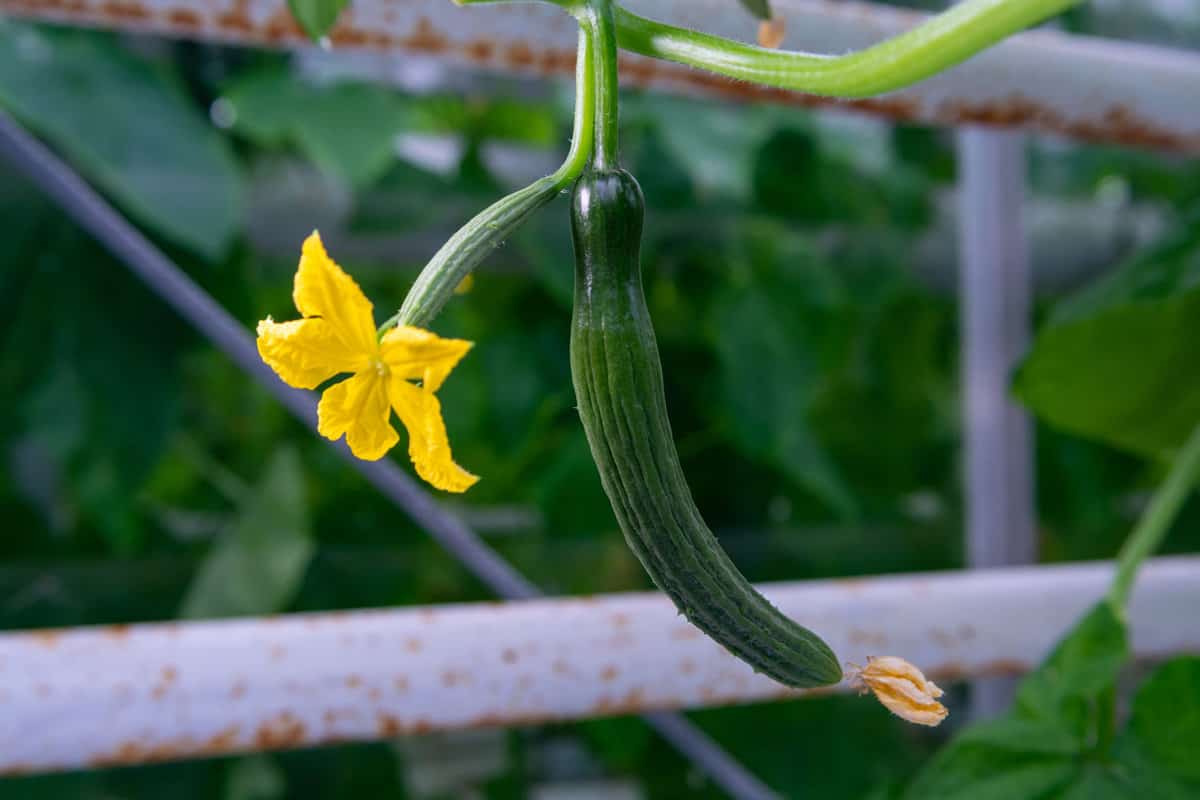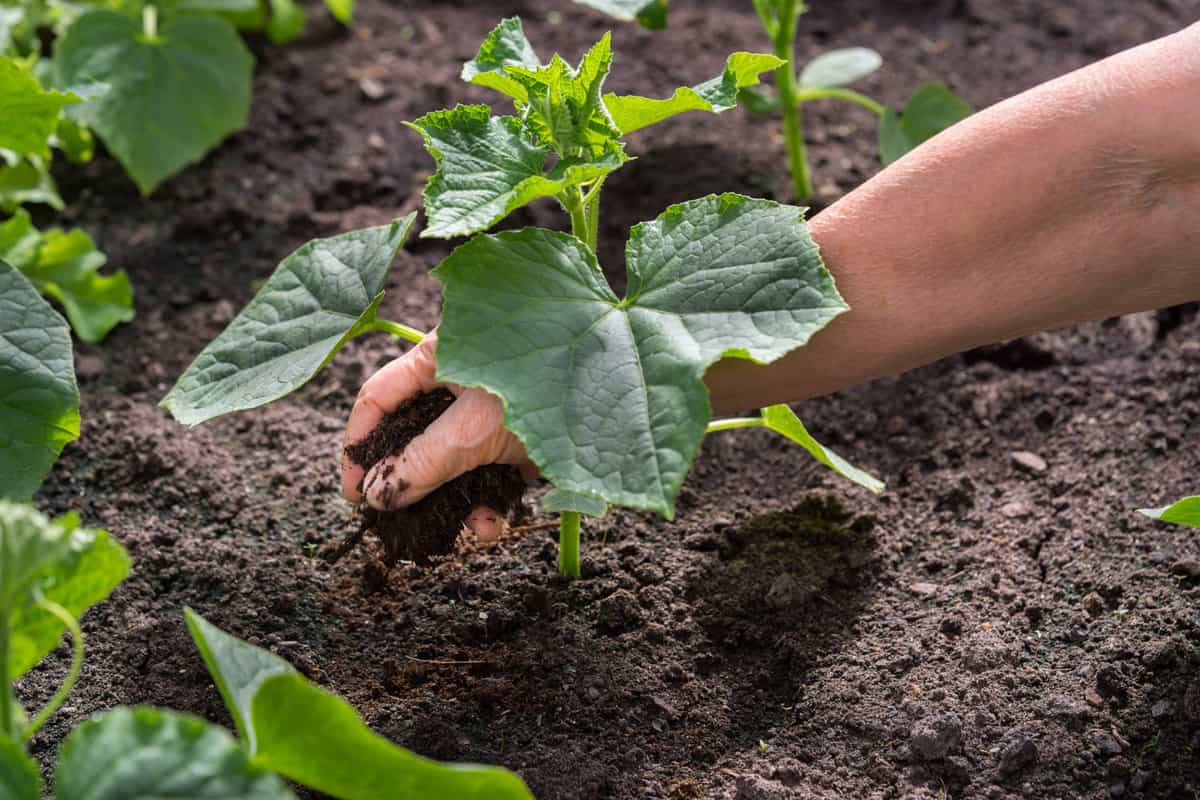Have you ever grown cucumbers in your garden and wondered if they're getting any action?

Yes, we're talking about pollination! Because let's face it, without some romance in the air, your cucumber plants won't be fruitful, and that's a real pickle.
But worry not, we're here to help you decode the secret language of cucumber love.
So, let's dive into the world of cucumber romance and uncover the secrets of successful pollination!
Pick the Perfect Cucumber: How to Tell if Your Cucumber is Pollinated
To tell if a cucumber is pollinated, you can look for several signs. One of the easiest ways to tell if your cucumber is pollinated is by looking at the flower.
If the flower has fallen off and a small cucumber is growing in its place, then your cucumber has been pollinated.

However, if the flower falls off and no cucumber appears, then it's likely that your cucumber plant hasn't been pollinated.
Another way to tell if your cucumber is pollinated is by looking at the stem. If the stem is starting to thicken and grow, then your cucumber has been pollinated.
This is because the cucumber fruit is starting to grow and develop. However, if the stem remains thin and doesn't seem to be growing, then your cucumber may not have been pollinated.
Why is Pollination Important for Cucumbers?
When it comes to growing cucumbers, pollination is a crucial step in the process. Without proper pollination, you may end up with fewer cucumbers or no cucumbers at all.
Here are some reasons why pollination is important for cucumbers:
Fruit Development
Pollination is essential for the development of cucumber fruits. When a cucumber flower is pollinated, the ovary at the base of the flower develops into a fruit.
Without pollination, the ovary will not develop into a fruit, and your cucumber plant will not produce any cucumbers.
Fruit Size and Shape
Pollination also affects the size and shape of the cucumber fruit. Proper pollination leads to larger and more uniform cucumbers.
If a cucumber flower is not pollinated, the resulting fruit may be small, misshapen, or deformed.
Seed Production
Pollination is also necessary for seed production. If your cucumber plants are not pollinated, they will not produce seeds.
This means that you will not be able to save seeds for future planting, and you will need to purchase new seeds each year.
Increased Yield

Proper pollination can also increase the yield of your cucumber plants. When a cucumber flower is pollinated, it produces more fruits than an unpollinated flower.
This means that properly pollinated cucumber plants can produce more cucumbers, leading to a higher yield.
By understanding the importance of pollination, you can take steps to ensure that your cucumber plants are properly pollinated and produce healthy and abundant fruits.
Signs of Successful Pollination
If you're growing cucumbers, it's important to know if they're pollinated. Successful pollination is essential for the development of healthy and tasty cucumbers.
Here are some signs to look out for:
Appearance of Female Flowers
Female cucumber flowers are the ones that produce fruit. When a female flower is successfully pollinated, it will start to grow into a cucumber. If the flower is not pollinated, it will simply wither away.

One way to tell if a female flower has been pollinated is to look at the base of the flower. If a small cucumber is starting to grow, then the flower has been pollinated.
On the other hand, if the base of the flower is still small and green, then pollination has not yet occurred.
Presence of Bees and Other Pollinators
Cucumber plants rely heavily on bees and other pollinators to transfer pollen from the male flowers to the female flowers.
If you see bees buzzing around your cucumber plants, then chances are they are doing their job and pollinating the flowers.

Other pollinators, such as butterflies and moths, can also help with pollination.
However, if you don't see any pollinators around your cucumber plants, you may need to take matters into your own hands and manually pollinate the flowers.
Remember, successful pollination is key to a bountiful cucumber harvest. Keep an eye out for these signs to ensure your cucumbers are growing strong and healthy.
Techniques for Hand Pollination
If you want to ensure that your cucumber plants produce fruit, you may want to consider hand pollination.
This technique involves transferring pollen from the male flowers to the female flowers to ensure successful fertilization. Here are the steps to follow:
Identifying Male and Female Flowers
Before you can start hand pollination, you need to be able to identify the male and female flowers on your cucumber plant.
The male flowers have long, thin stems and a single stamen in the center. The female flowers are identified by the small cucumber that is located at the base of the flower.
Transferring Pollen from Male to Female Flowers

Once you have identified the male and female flowers, you can begin the hand pollination process. Here are the steps to follow:
- Identify the male flower that you want to use for pollination.
- Gently remove the petals from the male flower to expose the stamen.
- Use a small brush or cotton swab to collect the pollen from the stamen.
- Locate the female flower that you want to pollinate.
- Gently brush the pollen onto the stigma of the female flower.
- Repeat the process with other male flowers and female flowers as necessary.
By following these steps, you can ensure that your cucumber plants are properly pollinated and will produce fruit.
Factors Affecting Pollination
If you're growing cucumbers, it's important to know how to tell if they're pollinated. The quality of your cucumbers depends on whether or not they are pollinated.
Here are some factors that affect pollination:
Temperature and Humidity
Cucumbers are sensitive to temperature and humidity changes. If the temperature is too hot or too cold, it can affect the pollination process.
Cucumbers grow best in temperatures between 70-85°F.

If the temperature is too hot, the pollen can become sterile and won't be able to fertilize the female flowers.
On the other hand, if the temperature is too cold, the pollen won't be able to germinate.
Humidity is also important for pollination. If the air is too dry, the pollen can become dehydrated and won't be able to fertilize the female flowers.
Soil Quality
The quality of your soil can also affect pollination. Cucumbers need well-draining soil that is rich in organic matter.

If your soil is too compacted, it can prevent the roots from absorbing the necessary nutrients.
This can cause the plant to produce fewer flowers, which can lead to poor pollination.
To ensure good soil quality, add compost or organic matter to your soil before planting.
Pest Control
Pests can also affect pollination. If your cucumber plants are infested with pests like aphids or spider mites, they can damage the flowers and prevent pollination.
To prevent pests, use natural pest control methods like neem oil or insecticidal soap.
You can also attract beneficial insects like ladybugs and lacewings to your garden to help control pests.
By paying attention to these factors, you can ensure that your cucumber plants are properly pollinated.
This will result in healthy, delicious cucumbers that are perfect for salads, pickling, or snacking.
Cucumber Romance Decoded - is Your Cucumber Wooing or Just Playing Games?
Remember, deciphering the cues of pollination is the key to unlocking a bountiful cucumber bounty.

From fallen flowers to buzzing bees, these signs reveal the clandestine love affairs happening in your garden.
If all else fails, unleash your inner matchmaker and try your hand at hand pollination.
With proper attention to factors like temperature, soil quality, and pest control, you'll soon be relishing in the satisfaction of homegrown, scrumptious cucumbers.
Happy gardening!
Here are more cucumber posts to enjoy!
When Do Cucumbers Start Producing? The Garden’s Tastiest Countdown
When Do Cucumbers Stop Producing? Understanding The Factors Affecting Production
